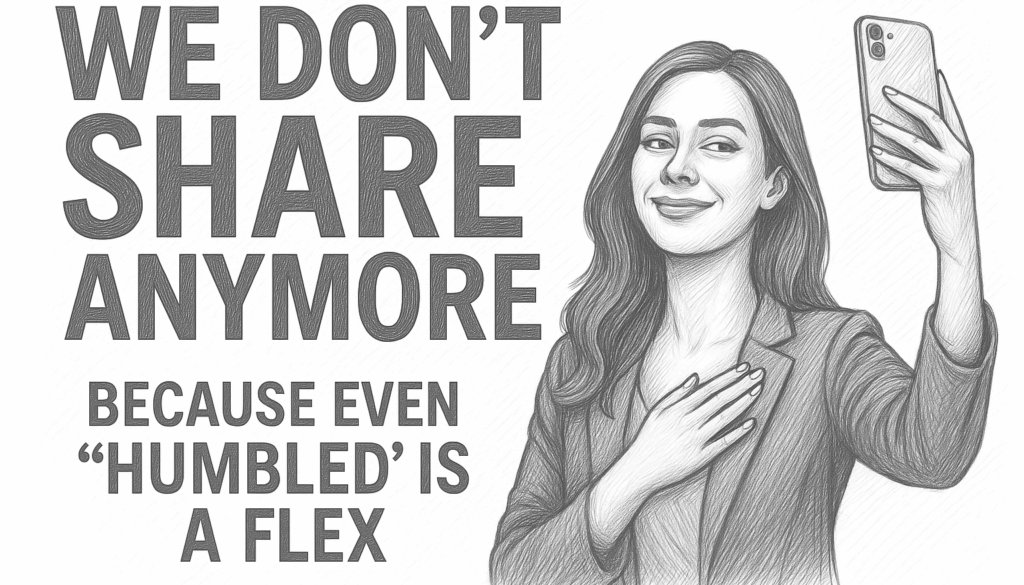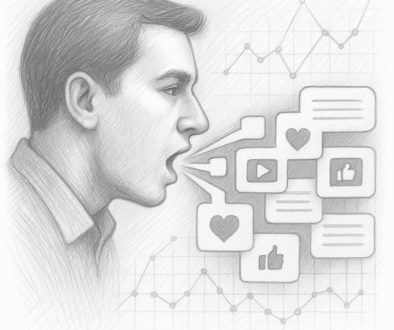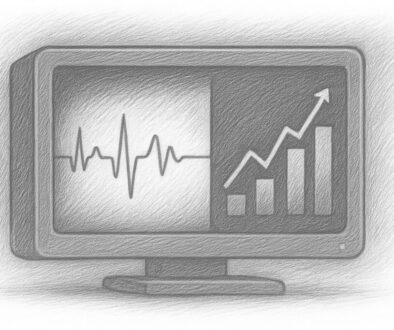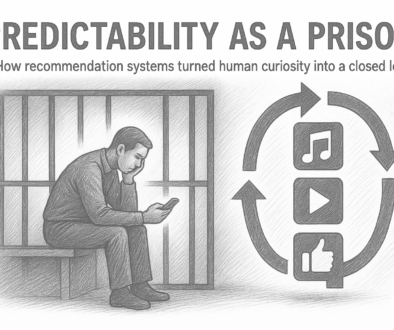Because Even ‘Humbled’ Is a Flex.
Hey voyeurs —
We didn’t always perform our lives for an audience. Once, sharing meant closeness — photos were memories, not marketing assets. But somewhere between the dawn of Facebook and the death of privacy, we rewired the act of sharing into a competition. Every post became a pitch. Every smile, a product.
We no longer share moments — we curate proof. Proof that we’re winning, living, thriving, better. And that proof fuels something darker than connection: envy.
Welcome to the envy economy — where validation is the new oxygen, and the real currency isn’t attention, but resentment.
From empathy to envy: the shift we didn’t notice
Originally, social media promised connection.
The dopamine hit of early networks came from belonging, from seeing friends’ lives and feeling part of something larger. But around 2012, as algorithms began rewarding engagement over authenticity, one emotion outperformed all others: envy.
A 2018 University of Copenhagen study on “Facebook envy” found that 88% of users reported feeling worse about their own lives after browsing others’ posts. Neuroscientists at Kyoto University later confirmed what marketers had long suspected: envy lights up the same brain regions as physical pain. It hurts — and we keep coming back for more.
Why?
Because envy is addictive.
It’s not the raw jealousy we feel, but the micro-dose of status anxiety it triggers. That subtle discomfort pushes us to post our own highlight reel, to regain ground in the invisible status war. The machine feeds itself.
The anatomy of engineered envy
Social platforms didn’t invent envy — they industrialized it. Likes, hearts, streaks, and view counts are behavioral drugs designed to activate reward circuits. Each notification is a pellet of social validation wrapped in pseudo-random timing, straight from the same playbook used in casino design.
But envy isn’t just a byproduct — it’s the engine. Meta’s own internal studies (revealed in the 2021 Facebook Files) showed that Instagram made one in three teenage girls feel worse about their bodies, yet these users spent more time on the app. Negative comparison drives engagement better than joy.
Luxury brands noticed too. Instead of selling products, they now sell envy loops: curated scarcity, limited drops, exclusive access. Even political movements borrow the tactic — turning belonging into a privilege to flaunt.
We no longer share to connect.
We share to signal — and every signal creates a mirror for someone else’s inadequacy.
LinkedIn: the socially acceptable envy machine
If Instagram sells envy through lifestyle, LinkedIn does it through virtue.
Every “I’m humbled to announce…” post is status theater disguised as humility — engineered to trigger professional FOMO.
We scroll past promotions, keynote photos, and startup milestones not to connect, but to measure. The algorithm rewards the same emotional triggers as Instagram — only with blazers instead of bikinis.
A 2024 University of Michigan study found 68% of LinkedIn users experience envy, though most call it motivation.
That’s the trick: professional envy doesn’t feel toxic — it feels productive.
LinkedIn turned competition into communion. A polite arms race where everyone applauds while quietly recalculating their self-worth.
When marketing learned to weaponize desire
Modern marketing didn’t just follow this shift — it perfected it.
Advertisers realized long ago that aspiration sells better than identification. A happy customer is passive; an envious one acts.
From early 20th-century cigarette ads (“Be the woman they notice”) to influencer culture’s soft-brag aesthetic (“Just landed, again”), the industry turned envy into a growth model.
Today, AI algorithms analyze which emotions hold attention longest — and envy consistently tops the chart.
In 2024, Nielsen’s Emotion Impact Index showed envy-based content had 42% higher recall than neutral or positive messaging.
In plain terms: make people feel worse, and they’ll remember you longer.
Power, politics, and the envy machine
Governments and lobbyists quickly realized that envy isn’t only a marketing tool — it’s a political one. Divide populations through visible inequality, and you breed engagement disguised as outrage.
It’s the same emotional architecture: attention driven by resentment.
Social media’s outrage cycles now mirror the envy loops of lifestyle content. Both keep us scrolling, sharing, reacting — believing we’re participating, when we’re actually being harvested.
The more we envy, the more data we generate.
The more data we generate, the more predictable — and profitable — we become.
Can we exit the envy trap?
Escaping isn’t easy.
You can’t detox from something that defines the entire infrastructure of communication. But there are cracks in the system.
- Slow media is rising. Platforms like Substack, newsletters, and long-form communities are shifting away from visual competition toward intellectual connection.
- Authenticity fatigue is real. Users — especially Gen Z — are starting to reject hyper-curated feeds in favor of chaotic honesty (BeReal, finstas, unfiltered posts).
- Brands are relearning humility. Those who dare to show imperfection are outperforming polished ones.
Still, the deeper solution isn’t technical — it’s psychological. We have to redefine what it means to share. Sharing shouldn’t mean “look what I have.” It should mean “this might help you, too.”
LinkedIn’s polished envy is the final layer of the same trap — proof that even professionalism can be gamified into a dopamine loop.
Until algorithms reward empathy over envy, the machine will keep winning. But there’s still agency in awareness. Recognizing the script is the first act of rebellion; choosing not to play it is the second.
Because maybe the real flex today isn’t being envied — it’s being unbothered.
Until next time, stay lucid.
Alex
At Kredo Marketing, we build human-centric strategies that work beyond the algorithm. Let’s talk →



